Search Results
Fine Jewelry University Articles matching: “What does c-4 mean in gold”
Showing only FJU Article results. Click here to show all results.
Fine Jewelry University (Show All FJU Articles)
-
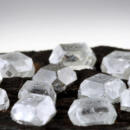
Is a Lab Grown Diamond Right for Me?
…). We’re here to help cut through some of the rhetoric, so you can make an informed and logical decision about what kind of diamond is right for you. First of all, if you’re not sure what a lab grown or synthetic diamond is, please check …full studied yet, it is generally accepted that it takes considerably less energy to grow a diamond in a lab than it does to dig it out of the ground. There is also no need to displace many tons of earth to create a lab grown diamond. You…
-
The Birthstones
…, Garnet. Garnet’s pizzazz energizes the gloomiest day. Garnet varieties brighten the world in colors of yellow to gold, bright orange to true orange, brown to cinnamon, pinks to greens, and of course many shades of red. Garnets are given…thoughts. Learn more about Amethyst March’s Birthstone: Aquamarine Originating its name from the Latin “aqua marina” meaning “sea water”, the aquamarine is a light blue to greenish blue beryl, most valuable when it’s a shade of darker …
-
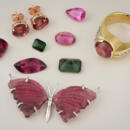
Gem in the Spotlight: Tourmaline
… in submarines. History and Lore of Tourmaline The name tourmaline comes from the Singhalese word turamali, which means “mixed gems” owing to the fact that the gem can look like many others. Tourmaline was first discovered in 1554 in … the power to grant enlightenment, give power over spiritual affairs, reconcile opposites, and change base metals to gold. Tourmaline has a special place in our hearts as California natives because it is one of the few gems that are found…
-
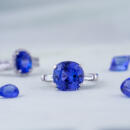
Gem in the Spotlight: Tanzanite
…a gemstone. Tanzanite has them both. In fact, it is estimated that Tanzanite is 1,000 times rarer than diamond. But, what makes Tanzanite so popular is its color. Tanzanite’s gorgeous color is a captivating mix of blue and purple. The …. Heating removes the green component which makes the violetish blue color pop (although technically speaking it doesn’t make it more blue, just less green). The amount of blue in a tanzanite is caused by the quantity of vanadium present…
-
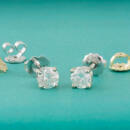
Styles of Earring Backs
…. CONS Losing an Earring – The closest thing to a con for this style is that if you are a very active person, it doesn’t take a ton of force to pull the back off with just the wrong tug from just the wrong angle. For this reason those … Irritant – If used with costume jewelry made of non-precious metals, it may cause irritation to sensitive skin. Gold options found on more valuable jewelry do not typically have this problem. Lever Backs (European Backs) Lever backs, …
-
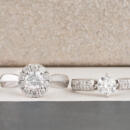
Anatomy of a Ring
… never know it was sized looking at the shank with your naked eye. Over time, the shank can wear thin—yes, even gold and platinum can wear away. In such cases a jeweler can “re-shank” the ring by replacing the metal at the bottom of the … plenty of wear while still fitting with the overall design that you like. Gallery The gallery of a ring is a somewhat ambiguous term that refers to the underside of the ring beneath the center stone. There is often a design on the top …
-

How Are Lab Grown Diamonds Made?
… the imagination of scientists and visionaries alike. Just like the alchemists of old who sought to turn lead into gold, many have tried to achieve this impressive feat. We have only recently been able to produce gem quality, lab grown … they had the idea to grow diamonds in the lab like they grew in nature. High Pressure High Temperature Diamonds How does nature form diamond crystals? Nature does it very deep underground. Diamond growing naturally takes place about 100 …
-
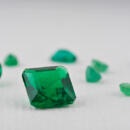
Gem in the Spotlight: Emerald
… every emerald has had some level of treatment to make the fractures less visible. It is so common that if the stone doesn’t have a report from a reputable lab (like GIA) saying otherwise, it is assumed that it has been treated with some …traditional grinding wheels used for milling sugarcane in Colombia, where these unique gems are predominantly found. What sets trapiche emeralds apart from other emeralds is their unique growth habit, featuring six black spokes radiating …